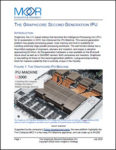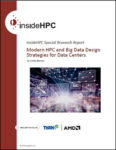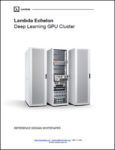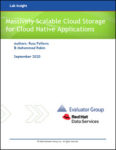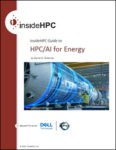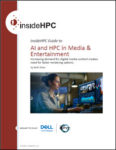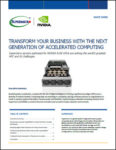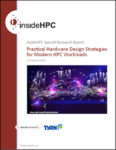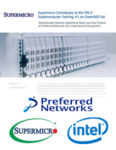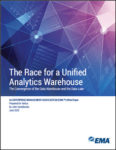Our friends over at Graphcore, the U.K.-based startup that launched the Intelligence Processing Unit (IPU) for AI acceleration in 2018, has released a new whitepaper introducing the IPU-Machine. This second-generation platform has greater processing power, more memory and built-in scalability for handling extremely large parallel processing workloads. This paper will explores the new platform and assess its strengths and weaknesses compared to the growing cadre of potential competitors.
Modern HPC and Big Data Design Strategies for Data Centers
This insideHPC Special Research Report provides an overview of what to consider when selecting an infrastructure capable of meeting the new workload processing needs. Tyan has a wide range of bare bones server and storage hardware solutions available for organizations and enterprise customers.
Deep Learning GPU Cluster
In this whitepaper, our friends over at Lambda walk you through the Lambda Echelon multi-node cluster reference design: a node design, a rack design, and an entire cluster level architecture. This document is for technical decision-makers and engineers. You’ll learn about the Echelon’s compute, storage, networking, power distribution, and thermal design. This is not a cluster administration handbook, this is a high level technical overview of one possible system architecture.
Massive Scalable Cloud Storage for Cloud Native Applications
In this comprehensive technology white paper, written by Evaluator Group, Inc. on behalf of Lenovo, we delve into OpenShift, a key component of Red Hat’s portfolio of products designed for cloud native applications. It is built on top of Kubernetes, along with numerous other open source components, to deliver a consistent developer and operator platform that can run across a hybrid environment and scale to meet the demands of enterprises. Ceph open source storage technology is utliized by Red Hat to provide a data plane for Red Hat’s OpenShift environment.
insideHPC Guide to HPC/AI for Energy
In this technology guide, we take a deep dive into how the team of Dell Technologies and AMD is working to provide solutions for a wide array of needs for more strategic cultivation of oil and gas energy reserves. We’ll start with a series of compelling use-case examples, and then introduce a number of important pain-points solved with HPC and AI. We’ll continue with some specific solutions for the energy industry by Dell and AMD. Then we’ll take a look at a case study examining how geophysical services and equipment company CGG successfully deployed HPC technology for competitive advantage. Finally, we’ll leave you with a short-list of valuable resources available from Dell to help guide you along the path with HPC and AI.
insideHPC Guide to AI and HPC in Media & Entertainment
In this white paper sponsored by our friends over at Dell Technologies, we take a look at AI and HPC in Media & Entertainment where an increasing demand for digital media content creates need for faster rendering options.
Transform Your Business with the Next Generation of Accelerated Computing
In this white paper we discuss how Supermicro servers optimized for NVIDIA A100 GPUs are solving the world’s greatest HPC and AI challenges. As the expansion of HPC and AI poses mounting challenges to IT environments, Supermicro and NVIDIA are equipping organizations for success, with world-class solutions to empower business transformation. We are continually testing and validating advanced hardware featuring optimized software components to support a rising number of use cases.
Practical Hardware Design Strategies for Modern HPC Workloads
Many new technologies used in High Performance Computing (HPC) have allowed new application areas to become possible. Advances like multi-core, GPU, NVMe, and others have created application verticals that include accelerator assisted HPC, GPU based Deep Learning, Fast storage and parallel file systems, and Big Data Analytics systems. In this special insideHPC technology guide sponsored by our friends over at Tyan, we look at practical hardware design strategies for modern HPC workloads.
Supermicro and Preferred Networks (PFN) Collaborate to Develop the World’s Most Efficient Supercomputer
Supermicro and Preferred Networks (PFN) collaborated to develop the most efficient supercomputer anywhere on earth, earning the #1 position on the Green500 list. This supercomputer, the MN-3, is comprised of Intel® Xeon® CPUs and MN-Core™ boards developed by Preferred Networks. In this white paper, read more about this collaboration and how a record-setting supercomputer was developed.
The Race for a Unified Analytics Warehouse
This white paper from our friends over at Vertica discusses how the race for a unified analytics warehouse is on. The data warehouse has been around for almost three decades. Shortly after big data platforms were introduced in the late 2000s, there was talk that the data warehouse was dead—but it never went away. When big data platform vendors realized that the data warehouse was here to stay, they started building databases on top of their file system and conceptualizing a data lake that would replace the data warehouse. It never did.

